A Better Future for Sports Venues
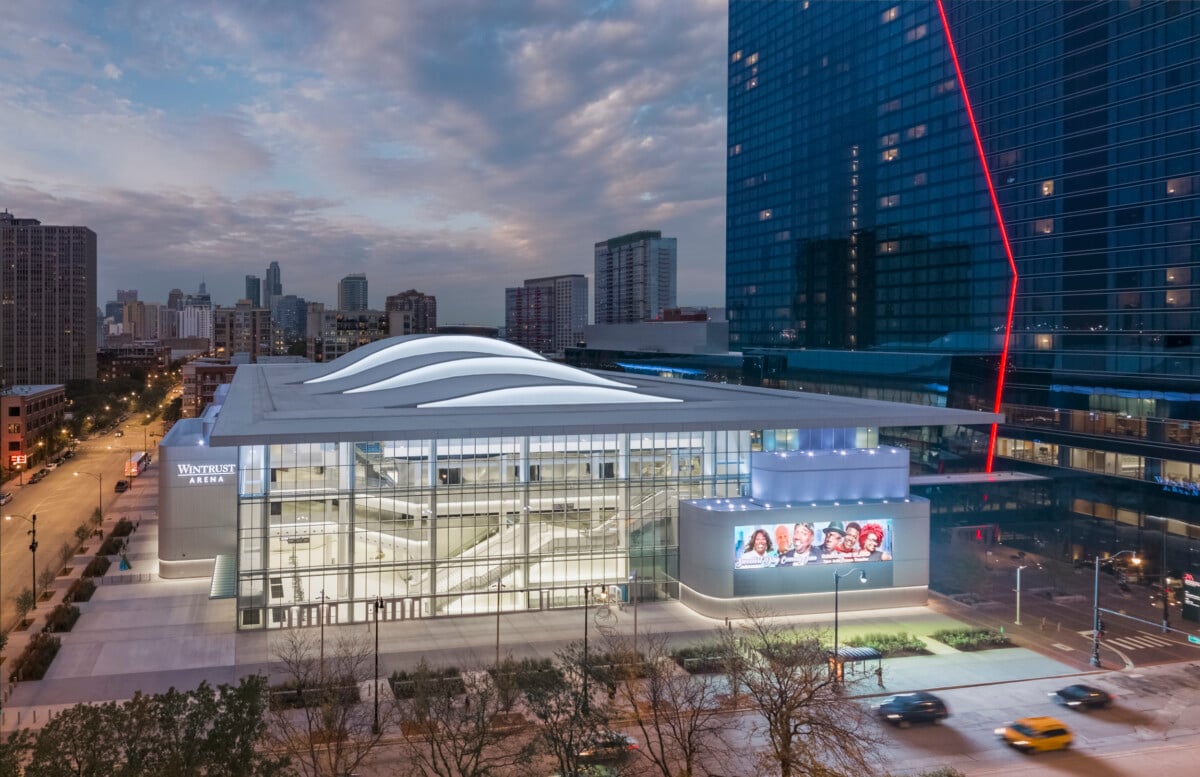
For many major cities, sports venues stand as iconic landmarks that embody the identity and collective spirit shared between professional sports teams and the cities they call home. These arenas, stadiums, and ballparks are the gathering places where fans come together, united by a passion for their team and their city. However, amidst the lively camaraderie are individuals who struggle to connect with the fervor surrounding their city’s teams.
Decades of sports venue construction have left a troubling legacy on American cities; one marked by a pattern of destruction, displacement, and broken promises—particularly in minority communities, where unsuccessful redevelopments have become part of the urban canon. For residents caught in this cycle, distrust and resentment become commonplace feelings towards the very teams intended to represent them.
The Return to Cities
In the early 20th century, American sports and entertainment venues were often situated in densely populated areas near transit connections or within walking distance of a central business district. By the end of WWII, suburbanization and white flight led many professional sports franchises to relocate their facilities from urban cores to rapidly expanding suburbs. This shift in location resulted in a new wave of stadium construction characterized by a lack of site integration and vast expanses of surface parking lots.
It wasn’t until the 1990s that a notable resurgence of downtown sports developments emerged as an attempt to revitalize urban areas. However, by applying suburban design strategies to urban locations, most venues built during this early return did not properly integrate into their surrounding environments. As a result, these developments became isolated enclaves that failed to contribute to their city’s livelihood, and in some cases, exacerbated the long-standing inequities in nearby neighborhoods.
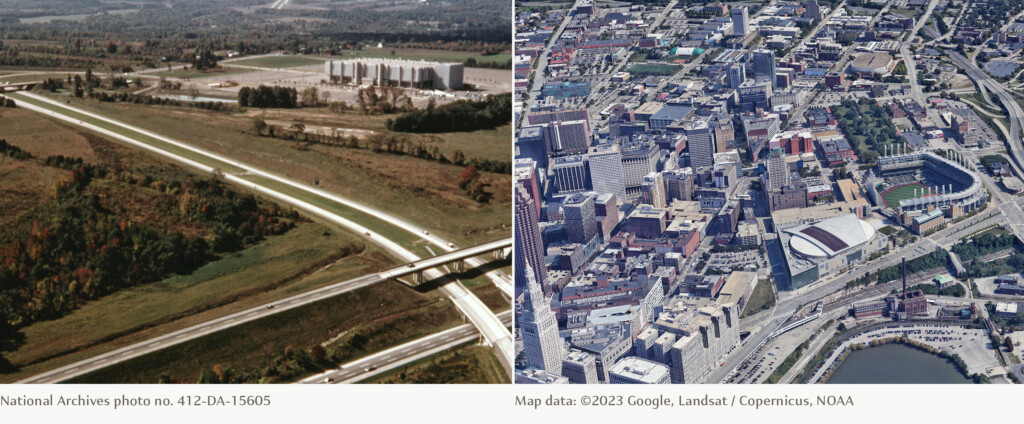
An Equitable Future for Sports Development
The past decade has seen a rise in stadiums, ballparks, and arenas positioned alongside restaurants, retail, and entertainment spaces. While this trend is a step towards reviving cities, additional progress can be made to repair the fraught relationship between communities and sports developments, particularly in urban neighborhoods.
When residents discover their community has been earmarked for a new sports venue, they react with understandable pushback. Afterall, history has shown how these developments (and many others) can diminish a community’s character and spur gentrification or displacement of long-time residents.
But it doesn’t have to be this way.
Sports and entertainment venues can generate social capital and achieve revenue growth when used as anchors for dense, mixed-use developments with diverse housing options, walkable streetscapes, and transit infrastructure.
There’s a broad range of strategies that sports and entertainment venues can utilize to benefit not only their team but also their city and community. Due to each community’s varying needs, there is no one-size-fits-all solution. Therefore, strategies must be tailored to address the specific challenges and opportunities of each location.
Ultimately, designers and developers should strive to answer the question: How can sports venues contribute to creating livable and equitable communities?
Engage the Community
Community engagement is particularly crucial to sports and entertainment developments because of their large impact and symbolic position as representatives of the city. One approach is through comprehensive Community Benefit Agreements (CBAs), which are legally binding agreements between developers and the community that include specific commitments to ensure more equitable development. This approach is invaluable in protecting minority neighborhoods that have been historically affected by disinvestment.
Another engagement strategy is through grassroots visioning sessions. Less formal than CBAs, these sessions create meaningful dialogue that builds trust between the developers, designers and community members. The feedback gathered from these events is used to guide decision-making. For large venues, plans could specify different zones for discussion, asking the community, “What do you want to see this space become?”
Community buy-in can shift the entire trajectory for some developments, with CBAs and engagement sessions acting as a lynchpin to produce better stadiums, ballparks, and arenas.
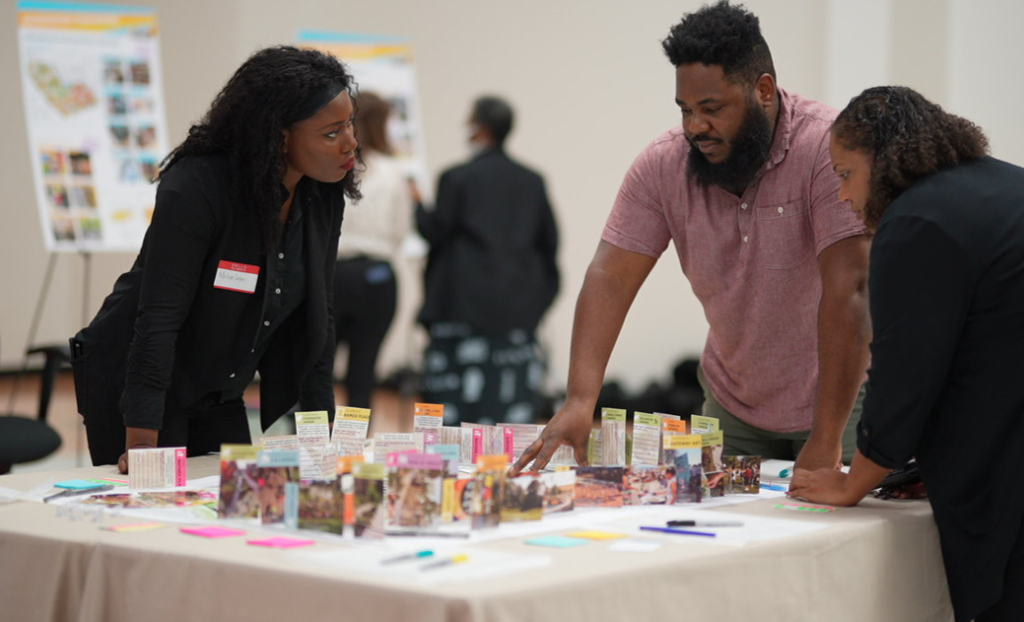
Create A Unique Sense of Place
Creative placemaking involves the strategic integration of arts, culture, and history into the planning and design of spaces. This approach can either build off a neighborhood’s existing identity or reintroduce elements that may have been lost over time. Both paths provide an opportunity to garner support from residents who see themselves represented within a place.
For visitors from afar or the suburbs, attending an event is one of the few opportunities to experience that city—to engage with its unique food, culture, and people. Creative placemaking not only establishes unforgettable memories; it links those memories to a place, encouraging visitors to return again and again.
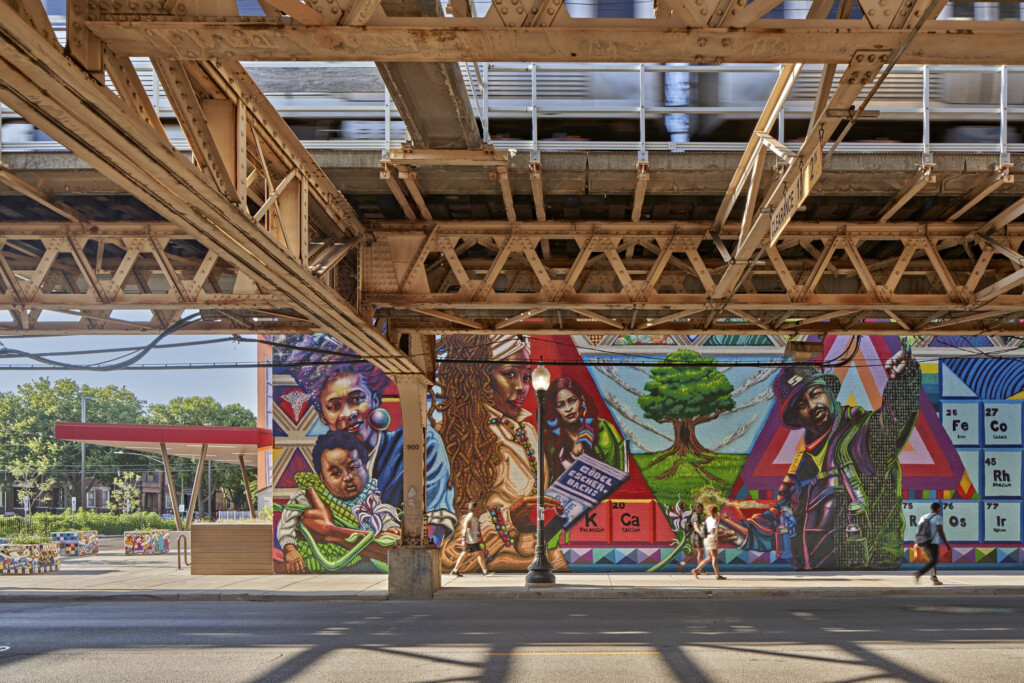
Provide Quality Civic Spaces
Vibrant public spaces are economically sustainable developments—its why restaurants facing public parks are more popular than others. A vibrant public realm bolsters economic activity and social cohesion by drawing people together, much like how a sporting event unites a crowd.
Quality public spaces don’t have to be large to be effective. Thoughtful urban planning and design can position sports venues to enhance, rather than detract, from the public realm and provide the necessary functional space for queues, ticketing, vendors, and pre-event gatherings. Beyond the practical elements, these spaces can also act as catalysts for meaningful, everyday experiences that connect people to each other and the city.
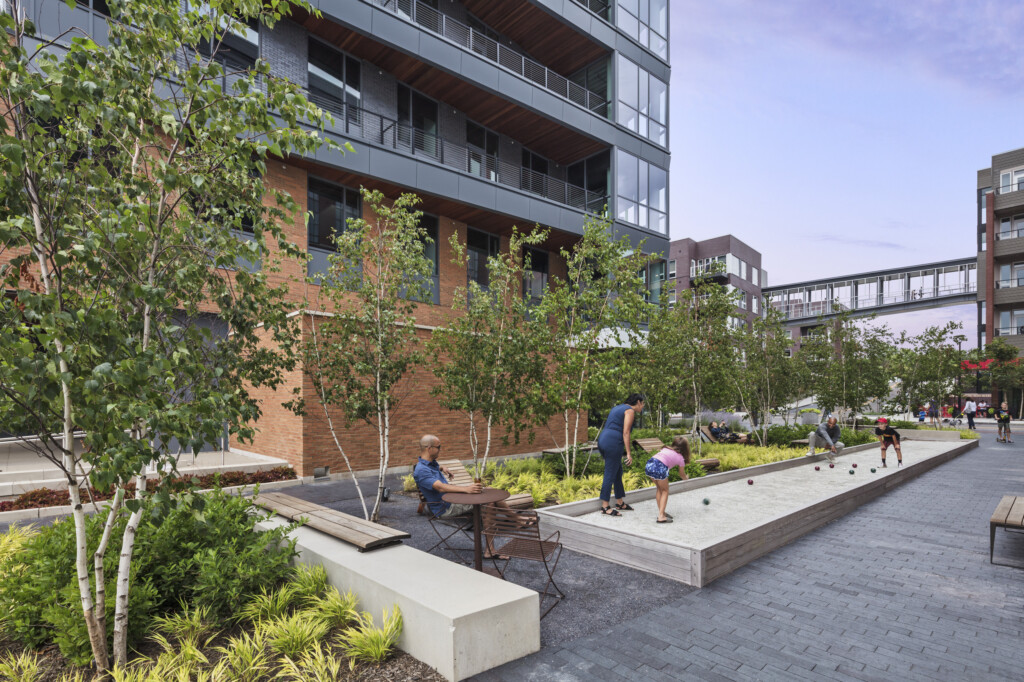
Be a Good Neighbor
Sensitive design measures allow venues to create a positive impact on their surroundings, especially dense urban areas. Strategies such as integrating with nearby structures, working across building scales to complement varying building heights, and the thoughtful selection of materials all play a significant role in preserving or highlighting a neighborhood’s character.
Understanding a neighborhood’s daily rhythms can inform design strategies that mitigate potential issues such as noise, traffic congestion, and safety concerns that residents often have with nearby sports venues. It also presents opportunities for venue developments to positively contribute back to a community by improving public spaces, enhancing connectivity through new transit links, and providing amenities that benefit residents beyond event days.
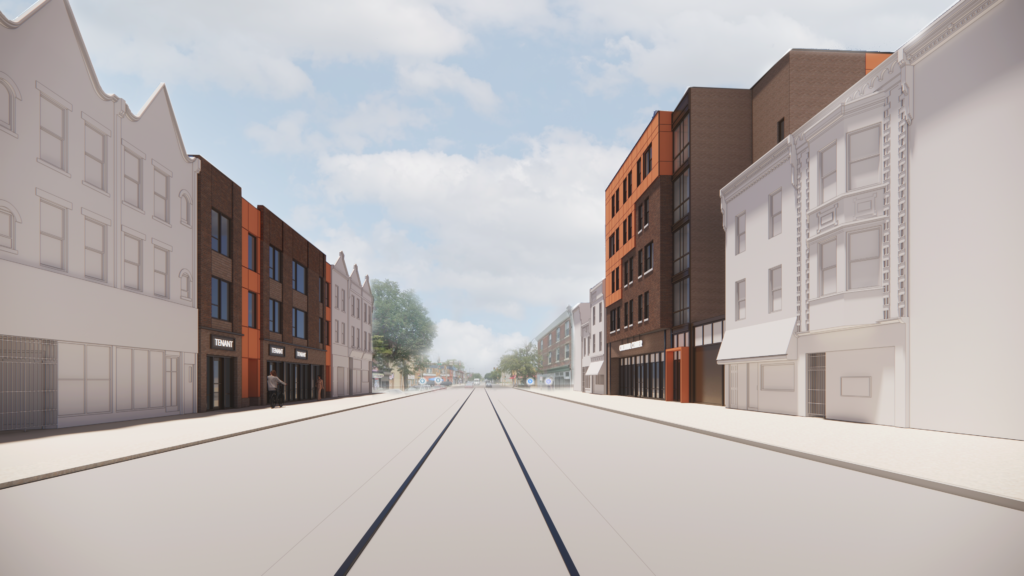
A New Era
Venue construction is expected to rise over the coming decade as an increasing number of arenas and stadiums approach their intended lifespan. Urban areas offer the infrastructure and connectivity to support this surge in development, making it even more important for new sports venues to embrace strategies that benefit the communities they serve.